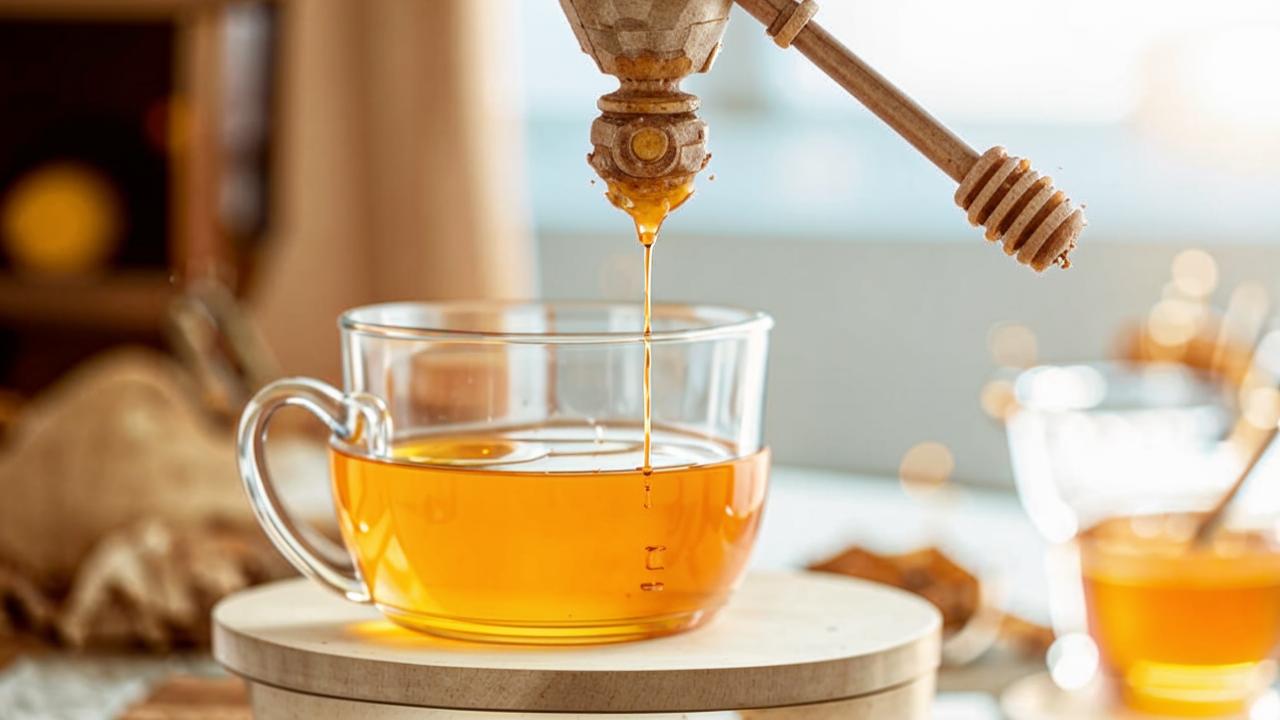Honey is one of the most valuable natural products used for nutritional and medicinal purposes. It has a very complex chemical composition that varies depending on the botanical source.
According to research, humans have been using honey since ancient times, as far back as about eight thousand years ago. Ancient Egyptians, Assyrians, Chinese, Greeks and Romans used this sweetness to treat wounds and intestinal diseases.
Several decades ago, honey became the object of laboratory and clinical research. For example, it was proved that the product has antibacterial properties and can fight such common microorganisms as Salmonella, Shigella, Escherichia coli, Helicobacter pylori.

Honey contains about 200 substances. It consists mainly of fructose and glucose, but it also contains fructooligosaccharides and many amino acids, vitamins, minerals and enzymes. The composition of the product varies depending on the plants the bee feeds on.
Useful properties of honey
- Contains bioflavonoids, antioxidants, B vitamins, vitamins C, A, as well as magnesium, potassium, phosphorus, zinc, sulfur, iron;
- slows aging, fights chronic inflammation, protects the body from stress;
- improves immunity, the body’s defense reactions;
- improves digestion and the gastrointestinal tract (GI tract);
- beneficial effect on the cardiovascular system: improves the elasticity of blood vessels, strengthens the vascular wall;
- has a tonic and tonic effect.

therapist
“There are different kinds of honey, but the top 3 most useful kinds are: linden, buckwheat and acacia honey.
Linden honey is ideal for colds, it works as an analgesic and antipyretic. Also, this type has a good effect on the gastrointestinal tract.
Buckwheat honey is rich in iron, amino acids, flavonoids. It has a tonic and tonic effect.
Acacia honey has the least amount of sugar compared to other types of honey while retaining the same amount of trace elements and vitamins. It’s also less allergenic.

Choosing the right packaging
Honey is best stored in glass jars with airtight lids. Plastic containers can also be used, but they should be made of food-grade plastic only.

Honey must not be stored in metal containers. In contact with metal, especially copper, a chemical reaction occurs and toxic substances are released. Such a product is not suitable for consumption.
Storage conditions
Honey is stored at a temperature from -5 to +20 degrees Celsius. That is, it can be stored in a dark cupboard or safely put in the refrigerator in a sealed glass or plastic container: it will not lose its useful properties.
But it should be borne in mind that if you put honey in the cold, then after that you can not change the temperature of storage – the container should now be kept only in the refrigerator. Otherwise, the chemical composition of the sweetness will change, which will affect its useful properties.
If the jar is leaky, then to preserve the nutritional value of the product, it is necessary to store it only in a dry, dark room. Also, do not put the container with sweetness next to spices and odorous substances, since honey quickly absorbs odors.
Duration of storage of honey
According to GOST, the shelf life of honey in a sealed container is two years, and in an open container – eight months.

If honey is solid, it will not undergo any changes. If the product was originally liquid, then after three to four months it will be sugared and thickened (if it is, of course, natural). The exception is acacia honey – it may not thicken for a very long time.
This process is normal and does not indicate that the honey has become worse or spoiled. On the contrary, it is a sign that it is natural.
Possible mistakes when storing honey
When storing honey, you can not change the temperature regime. You can put it in the refrigerator and even freeze it, but keeping it close to heaters or in a room in which the temperature rises to +30 degrees in the summer is not recommended.
Honey jar should be hermetically sealed, otherwise its shelf life will be significantly reduced. The fact is that honey can absorb moisture from the surrounding air. If this happens, it starts the fermentation process.

Honey should not be placed in direct sunlight. This also leads to fermentation of the product and leads to the loss of useful properties.
Signs of honey spoilage
When honey spoils, there is foam, bubbles on its surface, there may also be a sour or alcoholic odor – these are signs that the product has fermented. After its use, food poisoning may occur.
If you violate the conditions of storage, honey can overheat, then it will darken and acquire a caramel flavor. Such a product simply loses its useful properties, only sugar remains in it.
There is another sign of poor-quality honey: its stratification. If over time it has separated into two components, it means that it is either artificial or cheap sweeteners have been added to it. It is also not recommended to consume it, because there are few useful properties in it, and a lot of sugar.
It should be remembered that excessive consumption of honey, like perhaps any other product, can have unpleasant consequences for health. It can cause an allergic reaction in people allergic to pollen, cause food poisoning, severe stomach pain and lower blood pressure, which is dangerous for hypotensive people. Moreover, the product is very caloric and can contribute to the development of obesity and diabetes.





